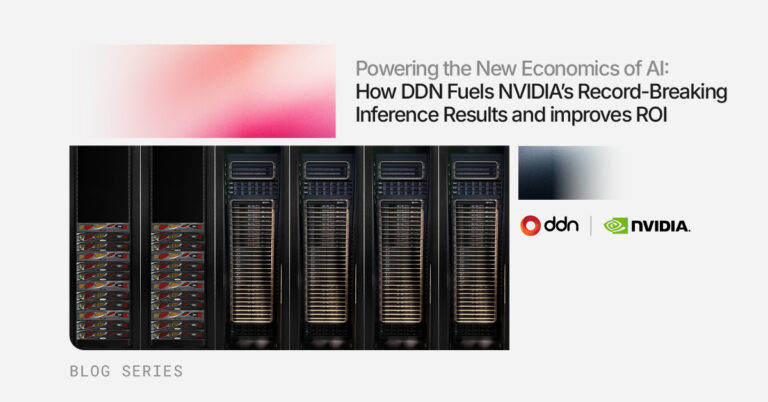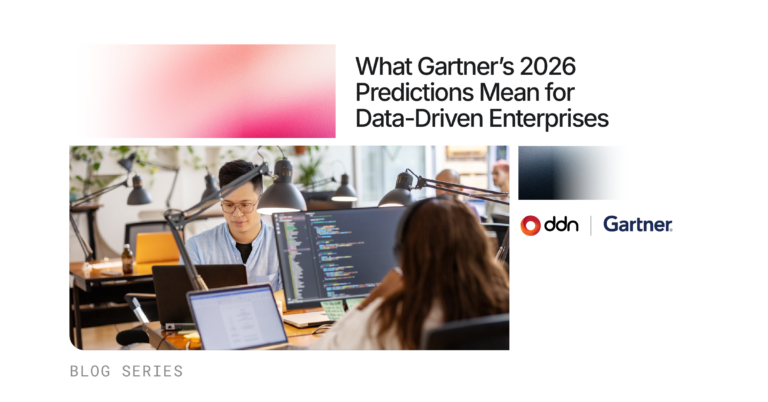Walk into any boardroom today, and chances are artificial intelligence is on the agenda. From healthcare to finance, manufacturing to automotive, the question is no longer whether AI matters, it’s how to harness it to stay relevant in a world changing faster than ever before.
But here’s the thing that’s rarely talked about while the spotlight shines on AI models, apps, and algorithms; the real action is happening quietly behind the scenes. It’s the infrastructure: the digital bedrock that determines who wins and who falls behind.
Bridging the AI Hype vs. Reality Gap with the Right Infrastructure
AI is everywhere. It’s in the apps we use, the ads we see, the decisions that shape markets. But for most organizations, the reality is far less glamorous than the headlines.
Instead, the majority are doing something much more practical; using pre-trained models for inference. They’re taking models already built by others and applying them to solve real business problems: customer service automation, fraud detection, drug discovery, predictive maintenance, and more.
This shift towards inference, particularly approaches like retrieval-augmented generation (RAG), is where real value lies for businesses today. And it is quietly reshaping what’s needed under the hood.
Why AI Is Coming Back On-Premises
The cloud has been the great enabler of AI’s early rise. It offered flexibility, speed, and scale at a time when few organizations knew what AI would even look like in practice. According to new research from Gartner® (How to Determine Infrastructure Requirements for On-Premises Generative AI, March 2025) “By 2028, more than 20% of enterprises will run AI workloads (training or inference) locally in their data centers, an increase from approximately 2% as of early 2025.”
Why the Shift?
Data Lives Here
AI can’t function without data, and for many, that data is multi-modal, distributed, and costly to move. Whether it’s patient records, financial transactions, or proprietary designs, moving data to the cloud creates risk and compliance headaches.
Control and Confidence
Trust is everything. Running AI on-premises gives organizations tighter control over security, performance, and cost, especially for mission-critical work and sovereign AI initiatives.
Money Talks
AI isn’t just about technology. It’s about economics. Cloud costs for continuous AI inference adds up. On-premises infrastructure offers predictability and, for many, significant savings.
It’s not that the cloud is going away. Smart enterprises are realizing they need a hybrid model, and they need to think differently about infrastructure to make that possible.
The Infrastructure Awakening
For years, infrastructure was an afterthought in AI conversations. Shiny algorithms grabbed attention while storage, compute, and networking quietly held everything together.
And here’s the uncomfortable truth: it is changing, and most enterprise infrastructure today isn’t ready for AI. It wasn’t designed for the speed, scale, and data intensity that AI demands.
The New Rules of AI Infrastructure
So, what does “ready for AI” really mean?
Compute: Right-Sizing the Brainpower
It’s tempting to think every AI project needs the biggest, fastest GPUs. But Gartner’s research shows that for most inference work, that’s overkill. Many organizations can save millions by exploring alternatives, AI-optimized CPUs, accelerators, or less expensive GPU options.
This isn’t about being cheap. It’s about being smart. Not every job needs a rocket engine.
Storage: Where AI Actually Lives
Storage is where many AI projects stumble. AI workloads generate and consume data at unprecedented speed and scale. But most legacy storage systems can’t keep up. The new generation of storage, powered by data intelligence, is designed for data-intensive workloads where speed alone isn’t enough. It organizes and manages metadata at scale, keeps data accessible without delay, and moves it efficiently through demanding pipelines.
Legacy storage struggles to maintain the pace or volume of modern workloads. Systems end up stalled, with expensive compute resources waiting for data that isn’t ready when it’s needed. Storage needs to work in real time, delivering the right data to the right place without becoming the bottleneck.
Networking: Don’t Overbuild, Don’t Underbuild
In the past, high-end AI clusters demanded ultra-low latency networking like InfiniBand. Today, for most enterprise AI, modern Ethernet with smart optimization (NVIDIA offerings like Spectrum-X and GPUDirect) is more than enough. Getting this balance right means not overpaying, but also not creating bottlenecks that slow down business insights.
From Back Office to Boardroom: AI Infrastructure Is a Business Decision
One of the most important shifts Gartner highlights is that infrastructure is no longer just an operational concern for IT teams; instead, it has become a core part of how organizations compete, grow, and deliver value.
Decisions about infrastructure now influence everything from how quickly new services reach the market to how well companies control costs and manage risk. It impacts customer satisfaction, business agility, and the ability to respond to changing demands.
As technology moves closer to the heart of every business strategy, infrastructure choices including how data is stored, accessed, and protected have become board-level conversations.
CEOs, CFOs, and business unit leaders need to understand:
- Where AI delivers value
- How infrastructure impacts speed, cost, and control
- Why waiting too long to modernize could leave them behind
This is not about buying more hardware. It’s about building the foundation for the next decade of digital transformation.
Practical Steps to Take Now
For organizations that want to stay ahead, here’s a simple roadmap:
- Start With the Business Problem, Not the Technology.
Identify the real use cases where AI can move the needle for your organization. - Evaluate Your Current Infrastructure Honestly.
Can your systems handle AI-scale data? Are you locked into costly or outdated models? - Think Hybrid from Day One.
You’ll need both cloud and on-premises. Design with flexibility in mind. - Don’t Wait for Perfection.
AI moves fast. Start small, learn, and scale intelligently. - Make It a Cross-Functional Priority.
Bring together IT, business, compliance, and finance from the start.
Infrastructure Is the New Innovation Engine
The next wave of AI leadership won’t come from those who chase headlines. It will come from organizations that quietly, systematically, and wisely invest in the invisible systems that make AI possible.
This is the quiet infrastructure revolution. And like all revolutions, it will favor those who act early, think long-term, and build with intention.
The question is: are you ready? The next wave of AI leadership will belong to those who invest in the right infrastructure today. Visit DDN to discover how our data intelligence solutions empower you to manage, accelerate, and scale AI, on-premises, in the cloud, and everywhere in between.
Based on Gartner, Inc., “How to Determine Infrastructure Requirements for On-Premises Generative AI,” March 5, 2025 (ID G00825318).
GARTNER is a registered trademark and service mark of Gartner, Inc. and/or its affiliates in the U.S. and internationally and is used herein with permission. All rights reserved.


